Benefits of SMART PRP for Hair Loss
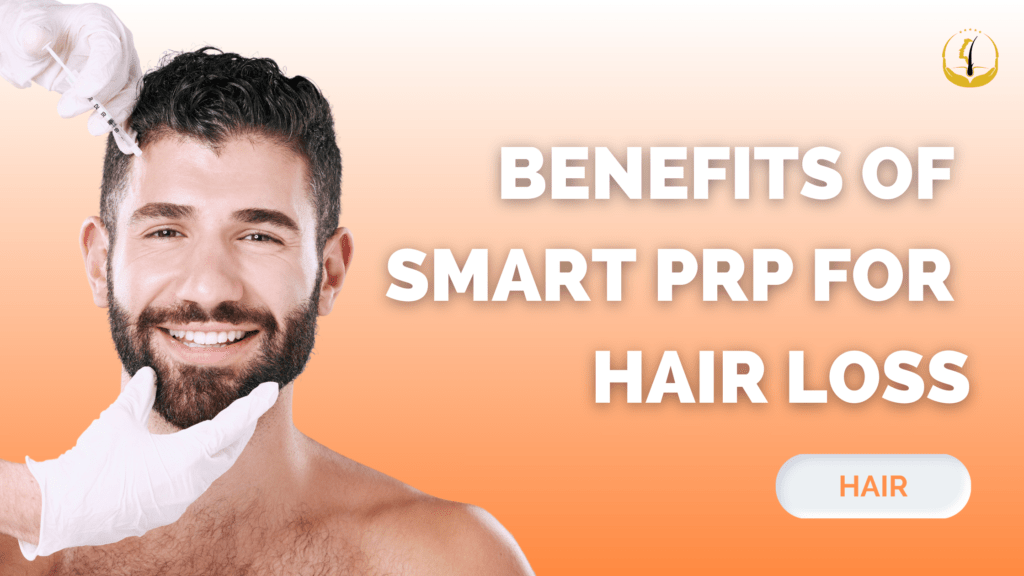
Hair loss is a prevalent concern impacting millions worldwide, often causing a dent in confidence and self-esteem. As an innovative solution, SMART™ Platelet-Rich Plasma (PRP) has emerged, promising a natural and effective alternative to more invasive treatments. In this exploration, we delve into the science behind SMART™ PRP and its potential as a game-changer in the battle against hair thinning. SMART™ Platelet-Rich Plasma (SMART™ PRP) SMART™ Platelet-Rich Plasma, exclusive to GLOJAS, is a cutting-edge treatment utilizing the body’s natural healing mechanisms to promote hair growth. The procedure involves drawing a small blood sample, centrifuging it to extract platelet-rich plasma, and injecting the concentrated SMART™ PRP into the scalp. Rich in growth factors and proteins, platelets play a pivotal role in tissue repair and regeneration. The Science Behind SMART™ Platelet-Rich Plasma for Hair Loss PRP therapy capitalizes on platelets’ ability to stimulate hair follicles, extend the hair growth phase, and induce new hair follicle formation. Growth factors in PRP promote angiogenesis, fostering the formation of new blood vessels around hair follicles, delivering essential nutrients and oxygen. Additionally, SMART™ PRP aids in reducing inflammation, a known contributor to hair loss. Advantages of SMART™ Platelet-Rich Plasma for Hair Loss SMART™ PRP therapy presents a non-invasive and promising solution for addressing hair loss. By leveraging the regenerative properties of platelets from a patient’s own blood, SMART™ PRP stimulates hair follicles, encourages cellular rejuvenation, and enhances blood circulation to the scalp. Administered through micro-injections, SMART™ PRP releases growth factors initiating natural hair growth, slowing down hair loss progression. This innovative treatment is a safe, minimally discomforting option for countering hair thinning, pattern baldness, and utilizing the body’s innate healing mechanisms for hair restoration. Incorporating SMART™ Platelet-Rich Plasma into Your Hair Loss Regimen For those considering SMART™ PRP therapy, consulting with GLOJAS experts is crucial. A personalized treatment plan, considering individual conditions and needs, typically involves sessions spaced several weeks apart to achieve optimal results. SMART™ Platelet-Rich Plasma therapy signifies a groundbreaking advancement in hair restoration. By tapping into the body’s natural healing mechanisms, it offers a safe and effective solution for individuals grappling with hair loss. As scientific exploration continues, SMART™ PRP therapy holds promise not only for hair restoration but also for rejuvenating self-confidence in those experiencing thinning hair. If you seek a natural and minimally invasive approach to hair restoration, SMART™ PRP therapy could be the transformative solution you’ve been searching for. Connect with GLOJAS today for a comprehensive consultation.
Can Hair Growth Oil Reverse Hair Loss?
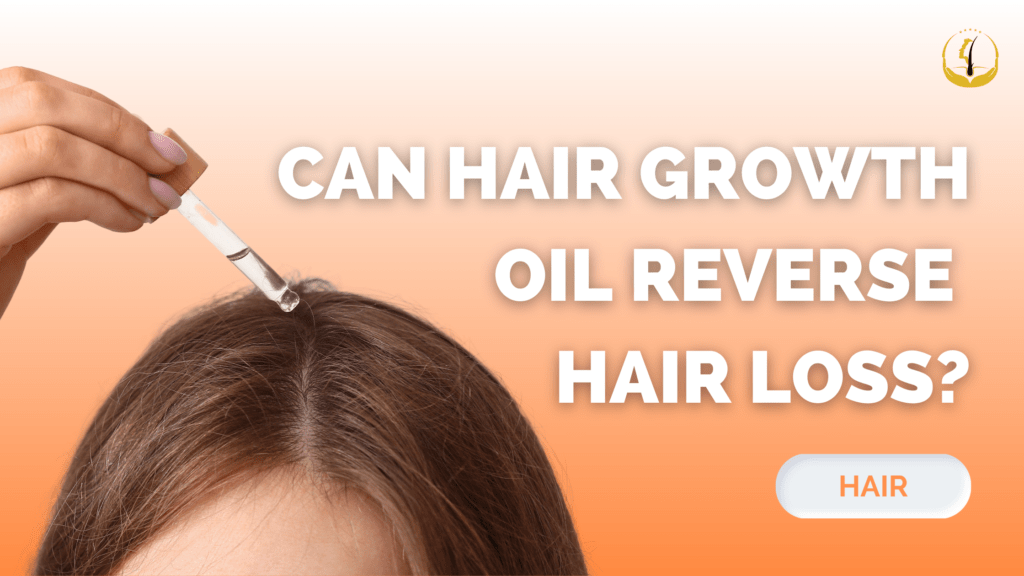
The quest for healthy, thick hair has led many individuals down a winding path of hair care products and remedies. Among the most touted solutions is hair growth oil, often marketed as a miraculous elixir that can reverse hair loss and promote regrowth. But does this seemingly magical oil really live up to its claims? Without any further delay, let’s explore the science behind hair loss, the potential benefits of hair growth oils, and whether they can genuinely reverse hair loss. What is Hair Loss? Before we get deeper into the efficacy of hair growth oils, it’s crucial to understand the root causes of hair loss. Hair loss, medically known as alopecia, can be attributed to a variety of factors, including genetics, hormonal imbalances, medical conditions, certain medications, and lifestyle choices. The most common form of hair loss is androgenetic alopecia, often referred to as male or female pattern baldness, which is influenced by genetic and hormonal factors. The Role of Hair Growth Oils in Hair Loss Hair growth oils typically contain a blend of natural and essential oils that are believed to nourish the scalp, strengthen hair follicles, and stimulate hair growth. These oils often include ingredients like coconut oil, castor oil, jojoba oil, and argan oil, each with its own purported benefits for hair health. Proponents of hair growth oils argue that these natural ingredients can help increase blood circulation to the scalp, deliver essential nutrients to hair follicles, and reduce inflammation, all of which are thought to contribute to healthier hair and potential regrowth. Natural vs. Pharmaceutical Approaches of Hair Growth Oils in Hair Loss While natural ingredients found in hair growth oils may offer some benefits, it’s important to note that the concentrations and mechanisms of action may differ from pharmaceutical solutions. Minoxidil, for instance, has undergone rigorous testing and clinical trials to substantiate its effectiveness, while the evidence for hair growth oils remains largely anecdotal. While hair growth oils may offer some benefits for hair health, it’s crucial to approach the claims with skepticism. The scientific evidence supporting the idea that hair growth oils can reverse hair loss is currently lacking. Hair loss is a complex issue influenced by various factors, and no single product or remedy can guarantee a complete reversal of this process. Maintaining a healthy lifestyle, including a balanced diet, proper hair care practices, and, if necessary, medical treatments prescribed by healthcare professionals, remains the most effective approach to addressing hair loss. There’s no denying that hair growth oils have captured the attention of many seeking a remedy for their thinning locks. While these oils may offer certain benefits for hair health. As we continue to unravel the complexities of hair growth and loss, it’s essential to approach such remedies with realistic expectations and consult with GLOJAS professionals for comprehensive and evidence-based solutions. Click the link to learn more about breast implant: “Can You Inherit the Hair Loss Condition?” At Glojas, we welcome clients to reach out to us directly to schedule a free initial consultation. We offer guidance and valuable insights on how best to address your specific challenges. Let us assist you in navigating your journey with confidence and clarity.
What Causes Varicose Veins and How to Get Rid of it?
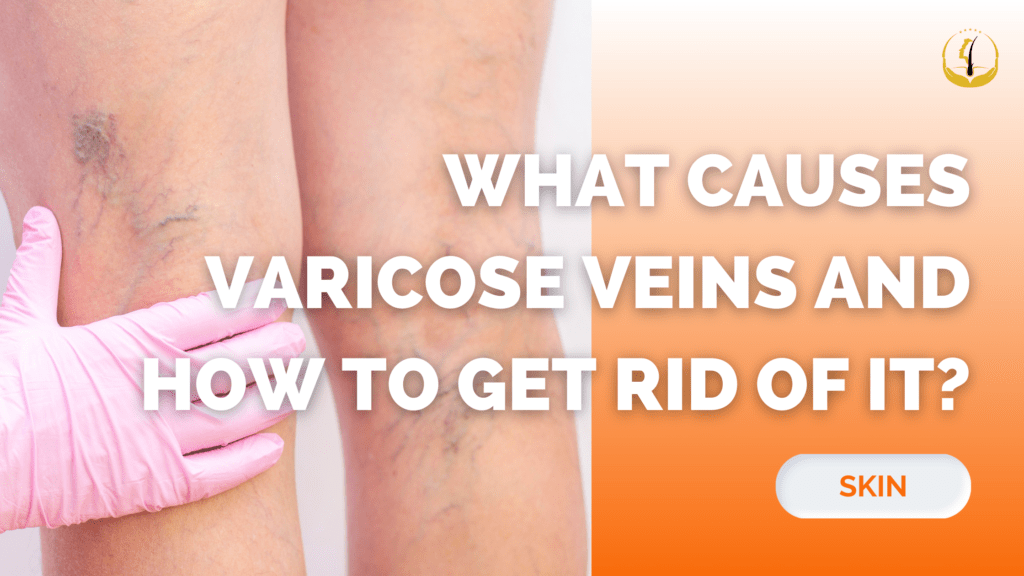
Varicose veins, those twisted and enlarged veins often found on the lower legs, not only impact appearance. It can also lead to discomfort and complications such as blood clots or open sores. In this comprehensive guide, we’ll explore the causes and discuss effective ways to manage and reduce their appearance. What Causes Varicose Veins? Varicose and spider veins are essentially damaged veins. The veins in our bodies contain tiny one-way valves that allow blood to flow in one direction and prevent it from backtracking. When the walls of these veins become stretched and lose elasticity, the valves weaken, leading to improper functioning. This can cause blood to leak and flow backward, resulting in the enlargement and swelling of veins. Several factors contribute to the development of varicose veins: Gender: Women are more susceptible due to hormonal influences that relax vein walls, making valves prone to leakage. Age: As we age, veins naturally lose elasticity, and the valves become less effective. Weight: Being overweight increases pressure on veins, contributing to their deterioration. Occupation: Jobs that involve prolonged standing can strain veins. Pregnancy: Increased blood volume and hormonal changes during pregnancy can intensify the risk of varicose veins. Managing Varicose Veins at Home While there is no cure, adopting certain practices at home can help improve blood circulation and reduce discomfort: Exercise: Incorporate regular physical activity into your routine to promote healthy blood flow. Leg Elevation: Elevate your legs whenever possible to alleviate pressure on veins. Movement Breaks: If your job involves prolonged sitting, take breaks every 30 minutes to walk and stretch. Avoid Hot Baths: Refrain from extended sessions in hot baths, as excessive heat can exacerbate vein issues. Compression Stockings Wearing compression stockings is a common and effective method to manage varicose veins. These stockings exert steady pressure, aiding blood movement back to the heart and reducing swelling. Consulting with a dermatologist ensures proper sizing and pressure recommendations for optimal results. Laser Treatment Laser treatment represents a non-invasive option for addressing it. During the procedure, the laser is directed at the affected veins. While small spider veins may disappear immediately, larger ones may darken initially and gradually fade over 1 to 3 months. Multiple sessions, usually three or more, may be required for complete clearing. Choosing a reputable dermatologist is crucial for successful leg vein treatment. GLOJAS, with its advancements in non-invasive and safe treatments, stands out as a reliable option for reducing the appearance. Their experienced professionals can guide you through the process and recommend personalized treatment plans based on your unique needs. In conclusion, while varicose veins may not have a definitive cure, effective management strategies and advanced treatments offered by experts like GLOJAS can significantly improve the condition and enhance overall well-being.
Intriguing Information About Body Contouring
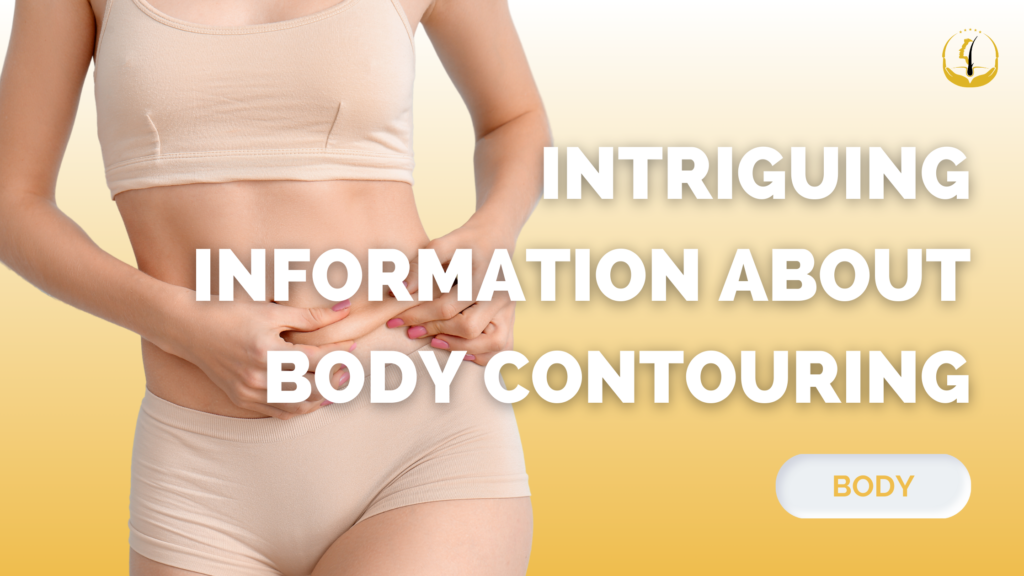
Body contouring is a process of removing excess sagging skin and fat while improving the shape of the underlying tissue! While the process of body contouring includes procedures that eliminate or reduce excess skin and fat in a variety of places like the torso, upper arms, chest, and thighs! Moreover, body contouring eliminates unwanted fatty areas and extra folds of skin. While liposuction and excision are the most general methods used to shape the body. These body contouring procedures are performed in order to reform body structures to develop physical appearance and confidence. If you too want to develop physical appearance and confidence, then you can get body contouring from GLOJAS clinic at much affordable rates! These hazards include some pain, swelling and bruising are natural for two or three weeks after surgery. Many patients lose immense weight in a short span of time and the skin does not preserve its shape, parting the patient with excess and baggy skin. Moreover, patients lose various amounts of body fat before the weight loss levels which makes them thin, moderate or still heavy. Body contouring methods work properly on smaller patients who had gastric bypass surgery while with larger people habitually had evident blemishes above and below the underwear region after surgery! Although, you can have one or more methods to accomplish your objectives for a young-looking and contoured body. Body contouring goals can be attained in one surgical session or may be more carefully performed in phases that can be depended upon the overall fitness. Developments to your body’s figure and overall image may be obtained by condensing excess fat and tissue. Further, body contouring can be maintained in shape by taking integrative cosmetic procedures at GLOJAS clinic.
How Much Should I Pay For A Hair Transplant?
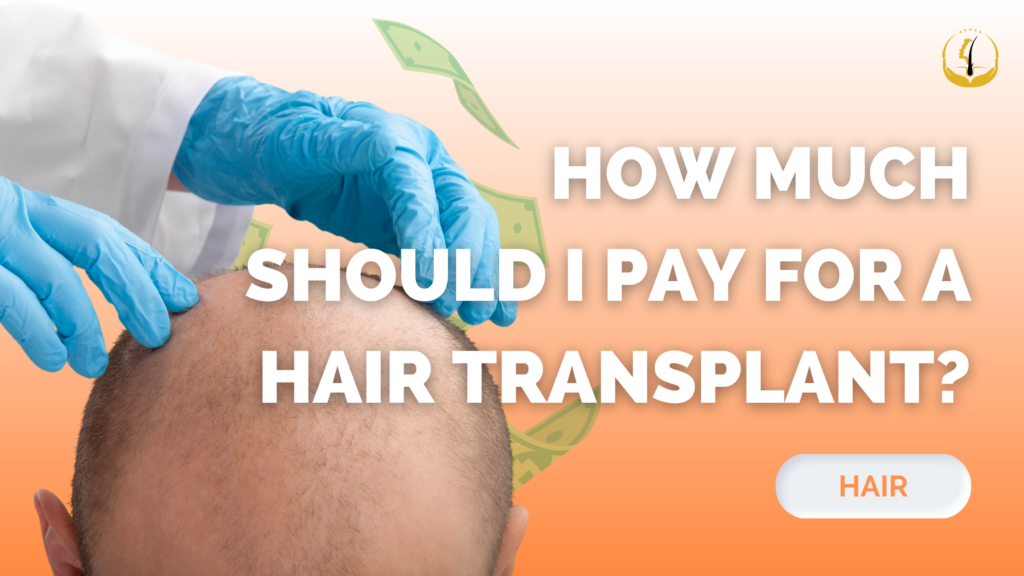
This is an important question that comes to the mind of most hair loss patients. Thinking about cost is not wrong since it is quite natural if one desires to make an affordable deal. However, things are different when you are looking for a hair specialist. While you get the treatment for any health issue, it means you need perfect results and you have to pay for the same. Obviously, it is not like buying your new car or dress. This is the matter of your health and if we talk about hair transplant, your look is also involved in the decision-making process. Conclusively, you have to consider the quality and safety before cost to make a good decision. Are cheap clinics disadvantageous? This is not a rule. Maybe you find a cheap and effective clinic but your aim should be quality treatment but not cheap treatment. While a clinic makes a claim to provide a cheap cost, you have to ask about other facilities they provide. Moreover, an extremely cheap cost is suspicious. Can you get gold at the price of bronze? Of course not! Thus, affordability is OK but you cannot rely on impractical claims. While you try to find out a clinic for hair loss treatment, you need to consider the following cost factors as well. The bald area on the scalp. A larger area on the scalp clearly indicates that you will get your treatment at a higher cost. Similarly, only a restoring hairline will be comparatively cheaper for the patient. You have to pay for every graft and every graft will increase the total cost after the treatment. Therefore, the surgeon has to count the grafts to determine the full cost. A more experienced and qualified surgeon will ask for more bucks after the treatment. If you reside in a metro city, the clinics in your city will be costlier for you. Clinics in a small city are comparatively cheaper. Your medicated shampoo, lotion, antibiotics, and other medicines might increase your bill after the treatment. Sub-procedures. Sometimes, the surgeon performs treatments like PRP to increase the effectiveness of the hair transplant surgery. Surely, PRP will increase the total cost. As you see, hair loss clinics have to consider several factors to determine the final cost. Different affordable clinics provide different offers to cut the total cost including low-interest rates, installments, seasonal offers, reduced fees for the initial consultation, free consultation on a specific day in a week, etc. If you want a reasonable cost for a hair transplant the GLOJAS Hair Specialist Clinic can fulfill your objectives. GLOJAS Hair Specialist clinic has developed a team of doctors and experts who have full mastery of hair transplants and other cosmetic procedures.
Why Do We Get Wrinkles?
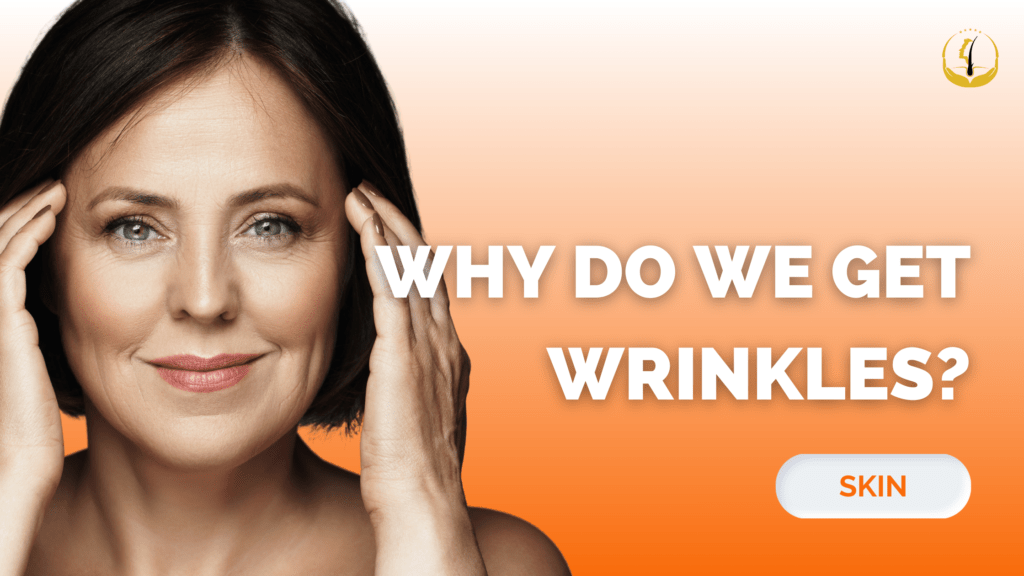
Wrinkles, those delicate lines etched across our skin, are more than just signs of the passage of time; they are an artistic testament to the intricate interplay of biological processes and external influences on our bodies. While they may evoke thoughts of aging, wrinkles are not merely a cause for concern; they tell a unique story of our individual journeys through life. Let’s gain a deeper understanding of why we develop wrinkles. The Role of Collagen and Elastin At the core of wrinkle formation lies the dynamic duo of collagen and elastin, two essential proteins found in the skin’s connective tissue. Collagen provides structural support, while elastin imparts elasticity and flexibility. As we age, our bodies produce less of these proteins, causing the skin to lose its firmness and resilience. The gradual decline in collagen and elastin synthesis, combined with environmental factors such as sun exposure and pollution, leads to the formation of fine lines and wrinkles. Exposure to Ultraviolet (UV) Rays The sun’s UV rays, while vital for vitamin D synthesis and mood regulation, can wreak havoc on our skin. Prolonged and unprotected exposure to UV radiation accelerates the breakdown of collagen and elastin fibers, leading to premature aging and the appearance of wrinkles. The sun’s harmful effects are a potent reminder of the importance of sunscreen and protective clothing in maintaining youthful skin. Facial Expressions and Muscle Contractions Our faces are expressive canvases that tell the stories of our emotions, but over time, the repetitive muscle contractions involved in smiling, frowning, and squinting contribute to the formation of wrinkles. These dynamic wrinkles, known as expression lines, become more prominent as the skin’s elasticity diminishes. They are a testament to a life lived fully, reflecting the laughter, joy, and myriad emotions we’ve experienced. Environmental Factors and Lifestyle Choices Beyond biological processes, lifestyle choices also influence the development of wrinkles. Smoking, for instance, restricts blood flow and oxygen delivery to the skin, accelerating the breakdown of collagen and elastin. Additionally, a diet lacking in essential nutrients and antioxidants can impair the skin’s ability to repair itself and fend off oxidative stress, leading to premature aging. Wrinkles, like the brushstrokes on a masterpiece, offer insight into the intricate tapestry of our lives. While they may signify the passage of time, they are also a testament to the experiences and expressions that shape us. Embracing the science behind wrinkle formation encourages us to prioritize self-care, make informed lifestyle choices, and cherish the beauty of aging gracefully. As we navigate the journey of life, let us wear our wrinkles with pride, for they are reminders of a life well-lived and a canvas rich with history. At Glojas, we welcome clients to reach out to us directly to schedule a free initial consultation. We offer guidance and valuable insights on how best to address your specific challenges. Let us assist you in navigating your journey with confidence and clarity.
Who May Not Be Suitable for Gynecomastia Procedure?

Gynecomastia, a condition characterized by the enlargement of male breast tissue, can be distressing and impact an individual’s self-esteem. For those considering a gynecomastia procedure, it’s essential to understand that not everyone is a suitable candidate for this intervention. While surgical or non-surgical options offer effective solutions for many, certain factors may deem someone unsuitable for the procedure. Underlying Medical Conditions Individuals with underlying medical conditions such as severe heart disease, uncontrolled diabetes, or clotting disorders may not be ideal candidates for gynecomastia procedures. These conditions can increase the risks associated with surgery and compromise the individual’s overall health. Psychological Readiness Gynecomastia procedures are not only physical but also psychological interventions. Individuals with unrealistic expectations, body dysmorphic disorder, or unstable mental health may not be suitable candidates. It’s crucial for candidates to have a healthy mindset and realistic goals before undergoing any cosmetic procedure. Smoking and Substance Use Smoking and excessive substance use, including alcohol and recreational drugs, can hinder the body’s healing process and increase the risk of complications. Individuals who engage in these activities may need to make lifestyle changes before considering gynecomastia surgery. Age and Hormonal Changes Adolescents experiencing gynecomastia due to hormonal fluctuations during puberty might not be suitable candidates for surgery, as the condition often resolves on its own. A physician may recommend monitoring the situation before considering any intervention. Lifestyle Commitment Post-operative care and lifestyle adjustments are crucial for successful outcomes. Individuals unable to commit to the necessary aftercare, including proper wound care, maintaining a healthy weight, and adhering to medical advice, might not achieve the desired results. Obesity Gynecomastia is often exacerbated by excess body fat. In cases of severe obesity, weight loss might be recommended before considering surgical intervention, as this can significantly reduce breast tissue without the need for surgery. Financial Considerations Cosmetic procedures, including gynecomastia surgery, can be expensive and are typically not covered by insurance. Individuals who cannot afford the procedure or are financially strained might need to explore alternative options or postpone the procedure. Allergic Reactions and Complications Individuals with a history of severe allergies or adverse reactions to anesthesia, surgical materials, or medications may be at a higher risk of complications and may not be suitable candidates for surgery. Ultimately, the decision to undergo a gynecomastia procedure should be made in consultation with a qualified medical professional. A comprehensive evaluation of an individual’s medical history, current health status, and personal circumstances is essential to determine whether the procedure is appropriate and safe. It’s important to prioritize health and well-being above all else, and only proceed with cosmetic interventions when it’s in the best interest of the patient. Consult with GLOJAS experts today to find out more! At Glojas, we welcome clients to reach out to us directly to schedule a free initial consultation. We offer guidance and valuable insights on how best to address your specific challenges. Let us assist you in navigating your journey with confidence and clarity.
The Role of Age in Hair Transplants
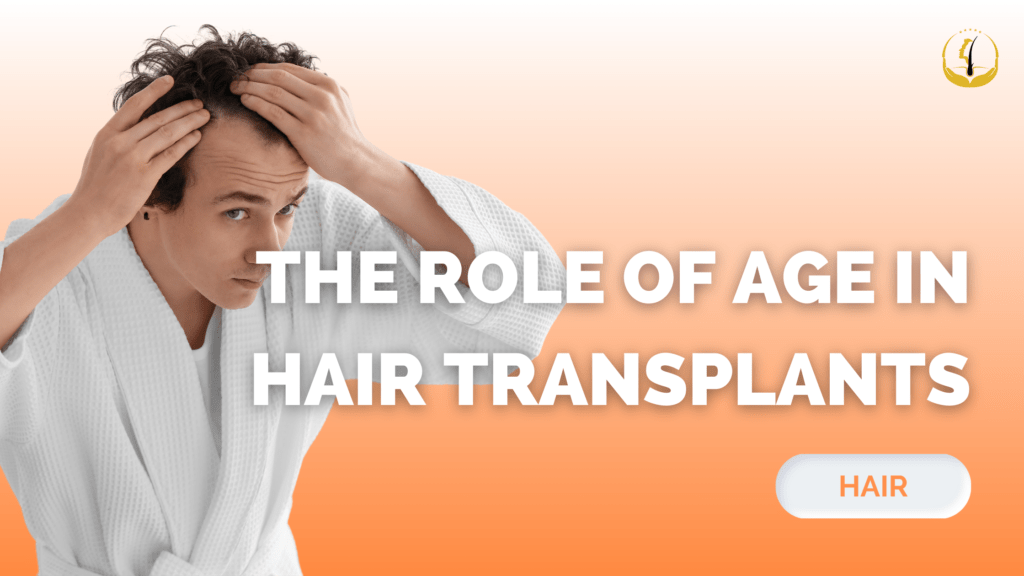
Hair loss is a common concern that affects individuals of various ages, and seeking solutions like hair transplants has become increasingly popular. However, the question of whether age matters when considering a hair transplant often arises. In today’s post, we will explore the significance of age in the context of hair transplants and provide insights into the factors that should be taken into consideration. Before delving into the role of age in hair transplants, it is essential to understand the different patterns of hair loss. Hair loss can occur due to various factors such as genetics, hormonal changes, medical conditions, and lifestyle choices. The most common type of hair loss, known as androgenetic alopecia or male/female pattern baldness, follows a progressive pattern and can start as early as the late teens or early twenties. Age and Hair Transplants While age is an important factor, it is not the sole determinant in deciding whether a person is a suitable candidate for a hair transplant. What matters more is the stage of hair loss and the stability of the hair loss pattern. In some cases, younger individuals experiencing early stages of hair loss may not be ideal candidates for a hair transplant as their hair loss pattern might not have stabilized yet. Hair transplant surgeons often recommend waiting until the pattern has stabilized before proceeding with the procedure to achieve more effective and lasting results. Candidates for Hair Transplant Procedure Hair transplant surgeons evaluate potential candidates based on various factors beyond age, such as the extent of hair loss, donor hair availability, overall health, and realistic expectations. A thorough assessment helps determine whether the individual is a good candidate for the procedure and which technique – such as SMART™ Follicular Unit Excision (SMART™ FUE) or SMART™ Follicular Unit Transplantation (SMART™ FUT), available only at GLOJAS – would be most suitable. Best Age for Hair Transplant Procedure While there isn’t a strict age limit for hair transplants, the general consensus is that individuals in their late 20s to early 60s are often considered ideal candidates. This is because hair loss patterns tend to stabilize within this age range, increasing the likelihood of successful and natural-looking results. However, every individual is unique, and exceptions can occur based on the specific circumstances. In the realm of hair transplants, age is an important factor, but it is not the sole determinant of candidacy. The stage of hair loss and the stability of the hair loss pattern play a crucial role in deciding whether an individual is suitable for the procedure. While individuals in their late 20s to early 60s are often considered optimal candidates, the final decision should be based on a comprehensive assessment by a qualified hair transplant surgeon. It’s essential to consult GLOJAS experts, specializing in hair restoration to determine the most appropriate course of action based on individual needs and circumstances. With advances in medical technology and surgical techniques, hair transplants can provide successful outcomes for a wide range of individuals, regardless of their age. At Glojas, we welcome clients to reach out to us directly to schedule a free initial consultation. We offer guidance and valuable insights on how best to address your specific challenges. Let us assist you in navigating your journey with confidence and clarity.
The Impact of a Weak Donor Area in Hair Transplants

Hair loss is a common concern for many individuals, and hair transplant procedures have emerged as an effective solution to restore lost hair and confidence. A crucial factor in the success of a hair transplant is the quality of the donor area, which serves as the source of healthy hair follicles for transplantation. However, what happens if the donor area is weak? Keep reading to find out! The donor area, typically located at the back and sides of the scalp, is known for its resistance to hair loss. This region is selected for hair extraction due to its genetically determined ability to retain hair even in the presence of androgenetic alopecia, commonly referred to as male or female pattern baldness. Hair follicles harvested from the donor area retain their inherent resistance to the factors that cause hair loss, making them ideal for transplantation. Weak Donor Area in Hair Transplant Limited Hair Availability: A weak donor area may have a reduced density of healthy hair follicles available for transplantation. This limitation can significantly affect the number of grafts that can be harvested and transplanted, potentially leading to less satisfactory results in terms of hair coverage. Compromised Aesthetics: With fewer viable hair follicles to work with, achieving a natural and aesthetically pleasing hairline and overall appearance can become challenging. A weak donor area may result in an uneven distribution of transplanted hair, making the outcome less harmonious. Future Hair Loss Concerns: If the donor area is weak due to underlying medical conditions or genetic predisposition, there is a risk that even the transplanted hair may be susceptible to future hair loss. This can lead to an undesirable scenario where transplanted hair also thins over time, requiring further procedures to maintain the desired look. Scarring and Healing Issues: Extracting hair follicles from a weak donor area can lead to increased trauma to the scalp and potential scarring. Proper healing may be compromised, impacting the overall success of the transplant procedure. Overcoming Challenges for a Successful Hair Transplant Despite the challenges posed by a weak donor area, advancements in hair transplant techniques offer some solutions: SMART™ Follicular Unit Excision (SMART™ FUE): SMART™ FUE allows for the extraction of individual hair follicles, reducing the risk of scarring and trauma. This technique is especially beneficial for patients with a weak donor area, and is only available at GLOJAS. Body Hair Transplants: In cases where the scalp donor area is weak, hair follicles from other parts of the body, such as the chest or beard, can be utilized for transplantation. However, the characteristics of body hair may differ from scalp hair. Combined Treatments: Hair transplant surgeons may recommend combining hair transplant procedures with other treatments, such as medical therapies or PRP (platelet-rich plasma) therapy, to enhance the overall results and minimize future hair loss. A weak donor area in a hair transplant procedure can present challenges, potentially affecting the quantity and quality of transplanted hair. However, with advancements in hair restoration techniques and careful planning by experienced surgeons, individuals with weak donor areas can still achieve satisfactory and natural-looking results. Consulting with GLOJAS hair specialists is essential to assess the suitability of the procedure and develop a personalized treatment plan that addresses individual concerns and goals. At Glojas, we welcome clients to reach out to us directly to schedule a free initial consultation. We offer guidance and valuable insights on how best to address your specific challenges. Let us assist you in navigating your journey with confidence and clarity.
Laser Hair Removal: A Permanent Hair Removal Solution
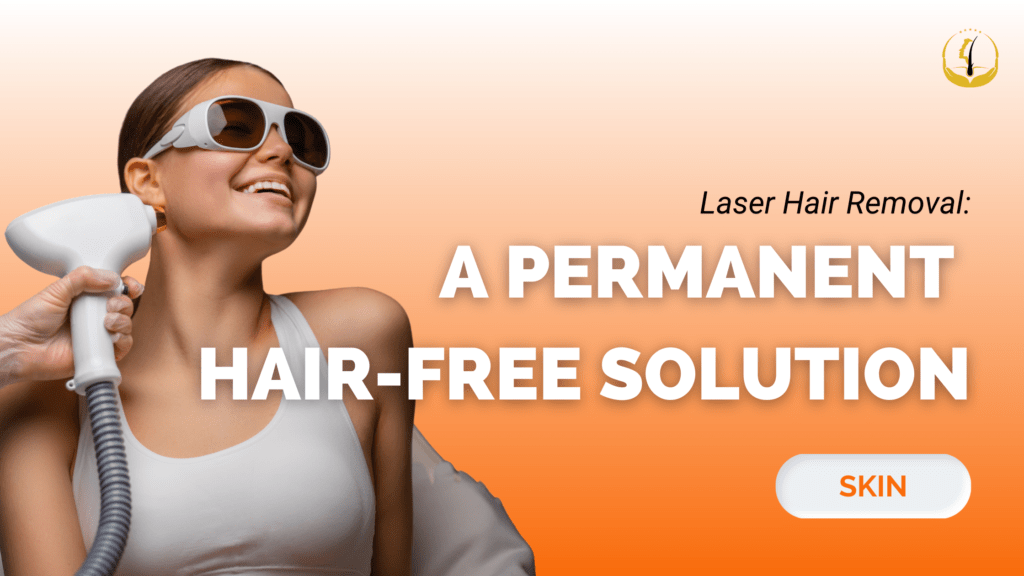
Are you tired of the constant hassle of shaving, waxing, or plucking unwanted hair? Do you dream of smooth, hair-free skin without the pain and inconvenience of traditional hair removal methods? If so, laser hair removal might be the answer you’ve been looking for. In this blog, we’ll delve into the world of laser hair removal, exploring its numerous benefits, suitability for both women and men, and its effectiveness. What is Laser Hair Removal? Laser hair removal is a revolutionary technique that offers a permanent solution to unwanted hair. Unlike temporary methods such as shaving or waxing, laser hair removal targets the hair follicles beneath the skin’s surface, effectively preventing future hair growth. This means you can say goodbye to those pesky razor burns and ingrown hairs, and hello to hair-free skin! Benefits of Laser Hair Removal Permanent Hair Removal: One of the most significant advantages of laser hair removal is its long-lasting results. After a series of sessions, many individuals experience permanent hair reduction in the treated area, resulting in smooth, hair-free skin. Painless Hair Removal: Unlike waxing or plucking, which can be painful and uncomfortable, laser hair removal is relatively painless. Most people describe the sensation as a mild stinging or tingling, similar to the snap of a rubber band. Suitable for All Genders: Laser hair removal is not limited to a specific gender. Whether you’re a woman looking to eliminate unwanted facial or bikini line hair or a man seeking a smooth chest or back, laser hair removal is an option for everyone. Laser Hair Removal for Women Women often opt for laser hair removal to target various areas, including: Facial Hair Removal: Say goodbye to unwanted facial hair on your upper lip, chin, or sideburns with laser hair removal. Brazilian Laser Hair Removal: Achieve a clean and smooth look in your intimate area with Brazilian laser hair removal, a popular choice among women. Full Body Laser Hair Removal: From legs to arms and everything in between, full-body laser hair removal offers a comprehensive solution for women seeking hair-free skin. Laser Hair Removal for Men Men can also benefit from laser hair removal, with common treatment areas including: Chest and Back: Get rid of excess chest and back hair for a cleaner and more attractive appearance. Facial Hair: Men can use laser hair removal to target areas like the beard, neck, or even the dreaded unibrow. Underarms: Eliminate underarm hair for improved hygiene and reduced sweat and odor. Laser Hair Removal for Sensitive Skin If you have sensitive skin, you may worry about the potential side effects of laser hair removal. Fortunately, modern laser technology has evolved to accommodate sensitive skin types. Diode and Nd:YAG lasers are known for being gentler on the skin, making them suitable options for individuals with sensitive skin. Laser Hair Removal Aftercare To ensure the best results and maintain your hair-free skin, it’s crucial to follow proper aftercare practices: Avoid Sun Exposure: Protect treated areas from direct sunlight for a few weeks after each session to prevent skin damage. Moisturize: Keep your skin hydrated with a fragrance-free, hypoallergenic moisturizer to soothe any post-treatment redness or irritation. Avoid Hot Showers and Steam: Refrain from hot baths, showers, saunas, or steam rooms immediately after treatment to prevent skin irritation. Be Patient: Laser hair removal requires multiple sessions for optimal results, as it is most effective during the hair growth phase. Stick to your treatment plan for the best outcome. Laser hair removal is a game-changer when it comes to achieving permanent hair-free skin. With its numerous benefits, suitability for both women and men, and versatility in treating various body areas, it’s no wonder why so many people are opting for this innovative solution. Whether you’re interested in Brazilian laser hair removal, facial hair removal, or full-body treatments, laser hair removal offers a painless and long-lasting solution. Just remember to follow the proper aftercare instructions to maximize your results. Say goodbye to the never-ending cycle of shaving and waxing and hello to a future of smooth, hair-free skin with laser hair removal! Click the link to learn more about Laser Hair Removal: “Laser Hair Removal What To Know” At Glojas, we welcome clients to reach out to us directly to schedule a free initial consultation. We offer guidance and valuable insights on how best to address your specific challenges. Let us assist you in navigating your journey with confidence and clarity.
